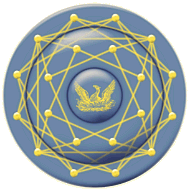Mobile Tactical High Energy Laser and Liquid Laser
Here's a look at two laser developments that show great promise. Laser weapons are the future of warfare. They will be able to engage targets from satalites in low earth orbit to individual terrorists, without collateral damage. Russia and China are both hard at work developing their own versions. Unfortunately, Barack Barry Soetoro Hussein Obama has pretty much pulled funding from these programs, so there won't be much progress until he is out of office.
MTHEL
Mobile Tactical High Energy Laser
----------------------------------------------------
By Noah Shachtman
November 17, 2009, 4:51 pm
The Pentagon’s mad science arm is moving ahead with a project to build a laser weapon “compact enough to be carried on board a tactical aircraft - say a B-1B bomber or an AC-130 gunship,” Aviation Week reports.
Darpa is getting ready to hand out 24-month research contracts to defense contractors Textron or General Atomics for the next phase of its High Energy Liquid Laser Area Defense System (HELLADS) program. In the works since 2003, the program is now looking to “build and ground-test” a 150 kilowatt laser weighing about 750 kilograms early in 2012. If it works, the result would not only be a power-to-weight ratio ten times better than existing laser systems. It could mean the next step in giving the U.S. a fleet of laser-blasting aircraft.
Lasers all work in pretty much the same way: Excite certain kinds of atoms, and light particles — photons — radiate out. Reflect that light back into the excited atoms, and more photons appear. But performance varies wildly, depending on the kind of “gain medium” — the type of atoms — you use to generate the beam. Textron is looking to use thin crystal slabs, if it gets the HELLADS contract. But those kind of lasers can rapidly overheat and suffer damage (a laser with a 50% efficiency generates the same amount of waste heat as the energy in the beam). A “liquid laser” like General Atomics approach to HELLADS should be less vulnerable to this, since the liquid can be cooled by circulation.
It’s one of several new ray gun research projects the military is launching, as laser weapons draw closer and closer to reality. The U.S. Air Force wants to figure out how the blasters will be incorporated into the national airspace and air traffic control system. The Navy, meanwhile, is looking to build “small, lightweight, and efficient packaging” to protect sensors from energy weapon attacks.
A specially modified 46th Test Wing NC-130H aircraft equipped with the Advanced Tactical Laser weapon system fired its laser while flying over White Sands Missile Range, N.M., successfully hitting a target board located on the ground. Equipped with a chemical laser, a beam control system, sensors and weapon-system consoles, the ATL is designed to damage, disable or destroy targets with little or no collateral damage.
Link



.jpg)
















